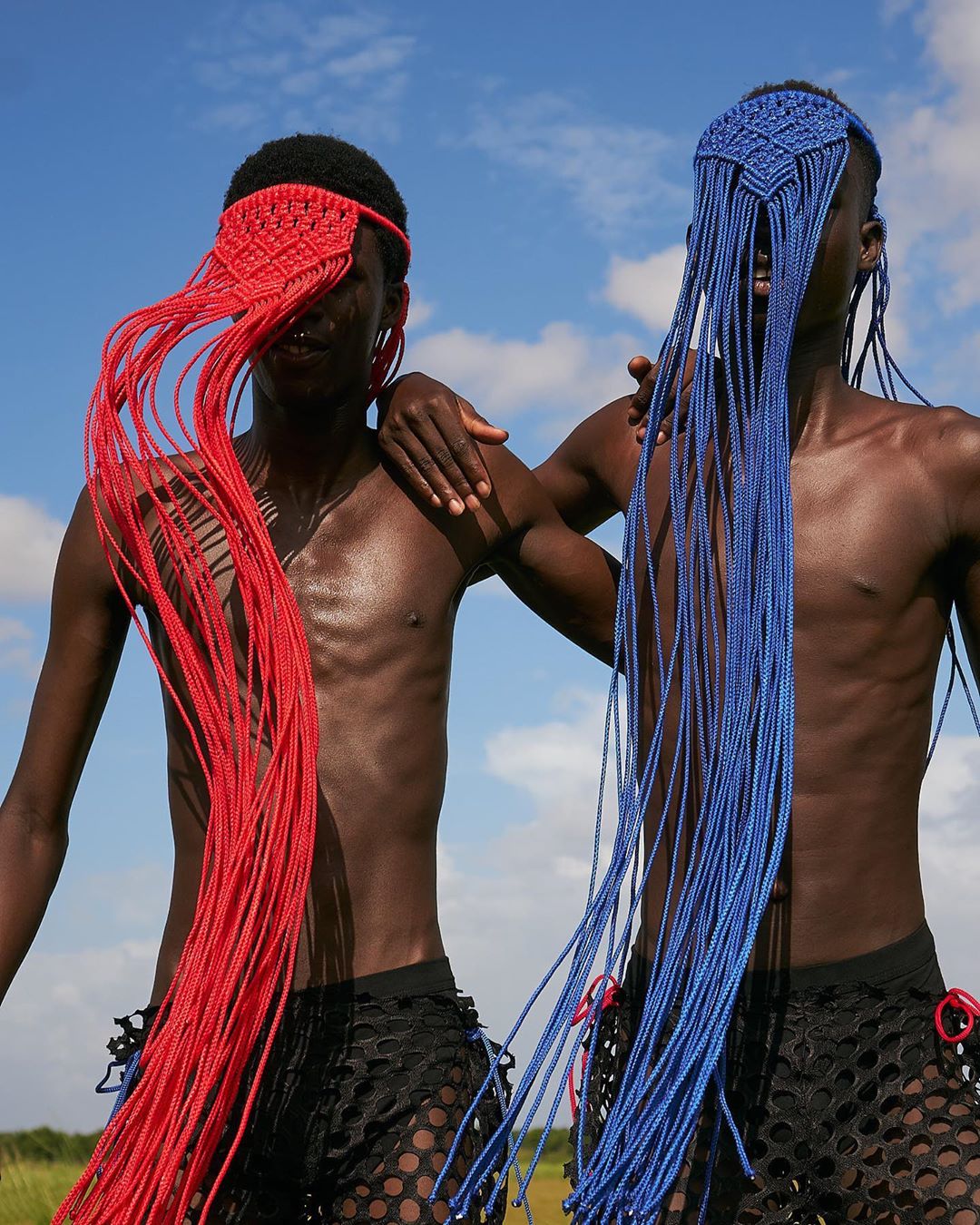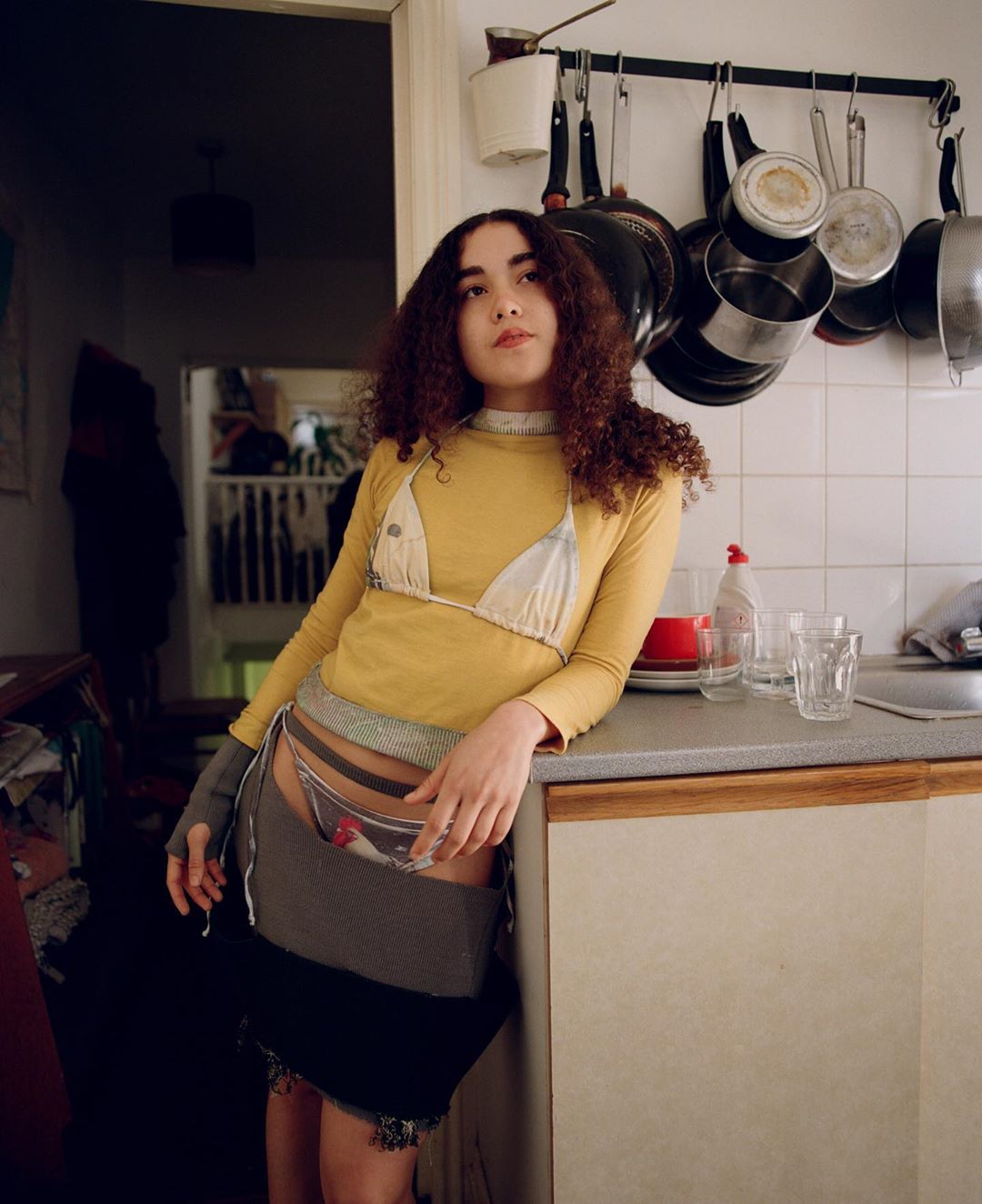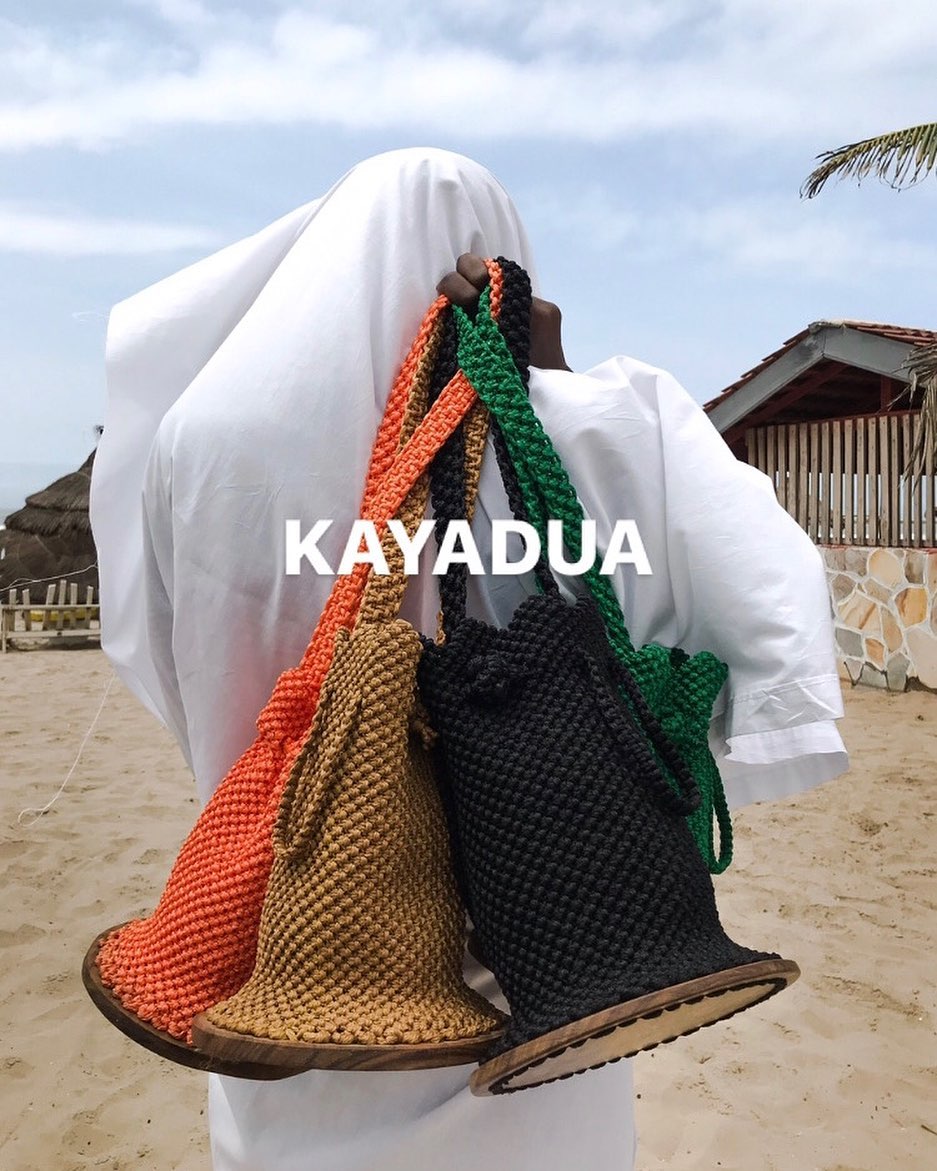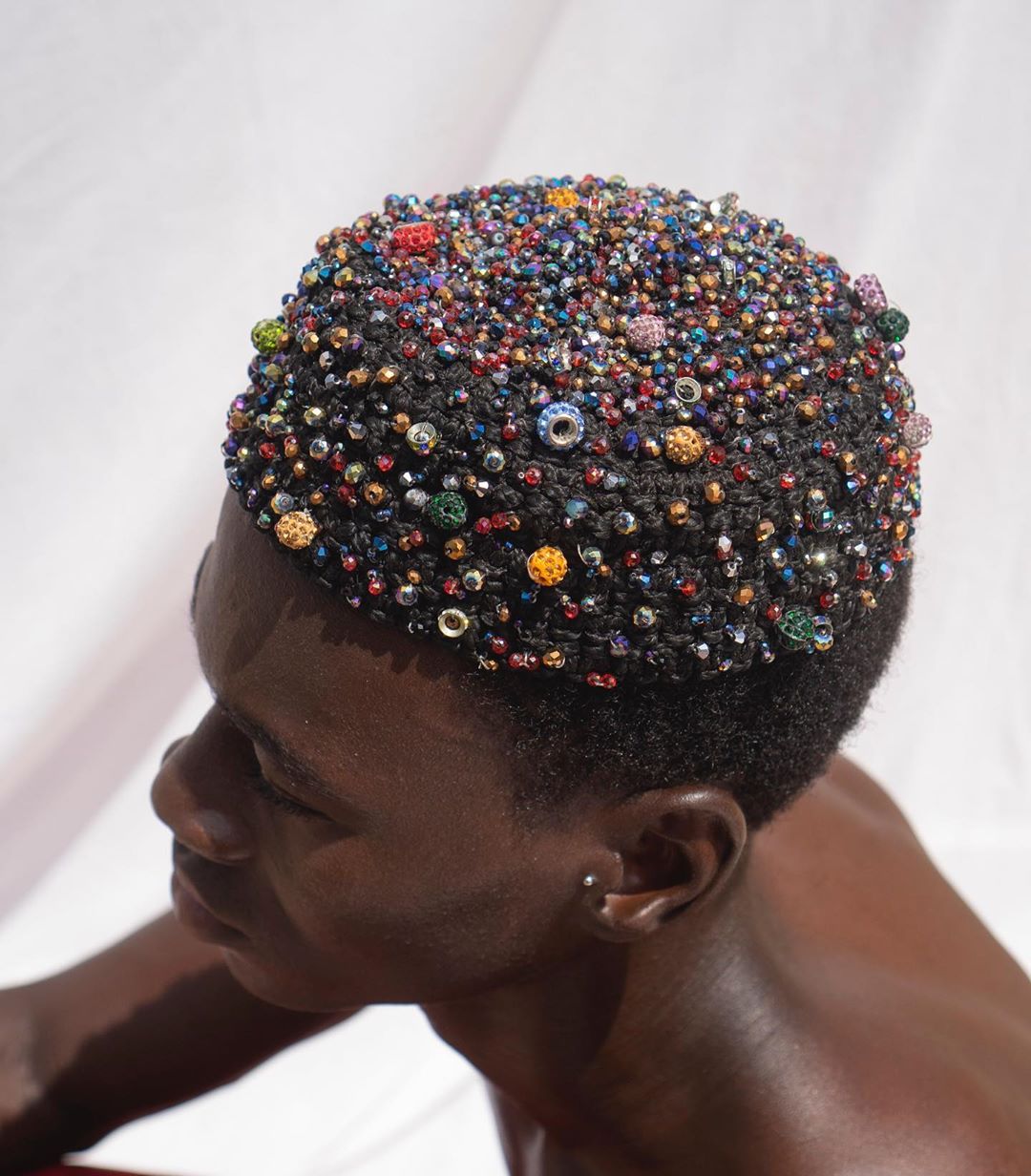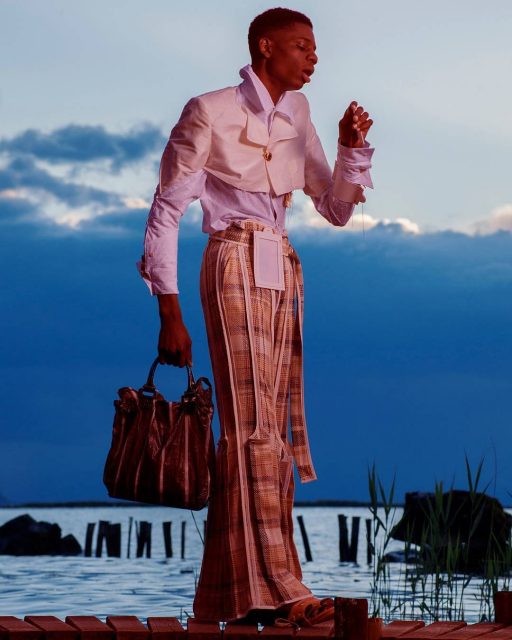Fashion as we know it – in the western world, has borders. Its map, entered in specific places such as Paris, London, Milan or New York, was settled a long time ago and was transmitted from one generation to the next. Certainly considered as granted, this traditional mapping has been deeply questioned these past few years. As an industry that produces often standardised content, fashion has always had a problem with diversity and inclusiveness – with a lack of racial diversity being the most pronounced transgression. However, going beyond tangible features, we find that the current fashion model is telling us that creativity is located in specific cities. Questioning such assessment makes us understand that it is based on a set of subjective realities. While these last few weeks we have seen a lot of systemic issues highlighted in the public space, we are now well aware of the fact that a real supremacy is taking over every aspect of our social life. This supremacy, rooted in whiteness, aims to devalue everything that does not adhere to its system of values. Fashion as part of society – created and shaped by social actors– is also impacted by these mechanisms that tend to homogenise aesthetics. But what would result if one were to challenge the normative rules of the traditional fashion map? What would happen if we expand the notion of fashion design and went above the traditional definition imposed by a system that bases its legitimacy on abstract visions?
Our journey, which seeks to question this actual fashion model, starts with Krystal Paniagua. Although this young designer who specialises in knitwear is now settled in London, her story begins on the island of Puerto Rico. Her interest in fashion design came at a very early stage – “I started at a young age; I was always interested in dressing up and playing with the garments around me. Being able to explore different shapes and materials of clothing, I was able to develop a sense of style, which consequently led me to learn how to sew.” Thanks to her next-door neighbour and extracurricular classes, she expanded her skills and it drove her to focus on fashion design while picking a higher education path. “After graduating from high school in Puerto Rico, I enrolled in a fashion design program at the Fashion Institute of Technology in New York City. I did the two first years of my Bachelors degree there, then decided to study abroad through a special program provided by the FIT in Milan where I specialized in knitwear and finished my degree at Politecnico di Milano. After graduating, I enrolled in a fashion MA program at Royal College of Art.”
After returning to Puerto Rico, she launched her fashion label through a very elaborate show that presented her MA collection. “Having people that supported my vision and who were willing to make it happen gave me a sense of direction. To see the people from the island excited to see and create something different inspired me to make it all happen. With the help of friends and peers I was able to organize a meaningful event that helped me launch myself as a brand while bringing a new output to the fashion scene in the island. It was all so organic, everybody involved understood the vision.” This collective effort allowed her to present her fashion vision deeply marked by her own heritage. “Puerto Rico is a small island where the weather is always summer” Krystal mused. Due to the hot climate conditions swimwear and easy evening wear are the most common forms of fashion in this type environment. “However, being able to live in different parts of the world has allowed me to explore other options and be more experimental with my clothing. As a Puerto Rican designer living abroad, I feel like I am not just designing for myself but also for the people in the island. I want to show that there is no limit to creativity and opportunities, there is no need to settle for what is already popular.” Krystal’s designs are surely showing us that limits exist only in our minds. Creating clothes that are adapted to the weather while getting around the usual norms is a challenge that she is ready to embrace.
 |
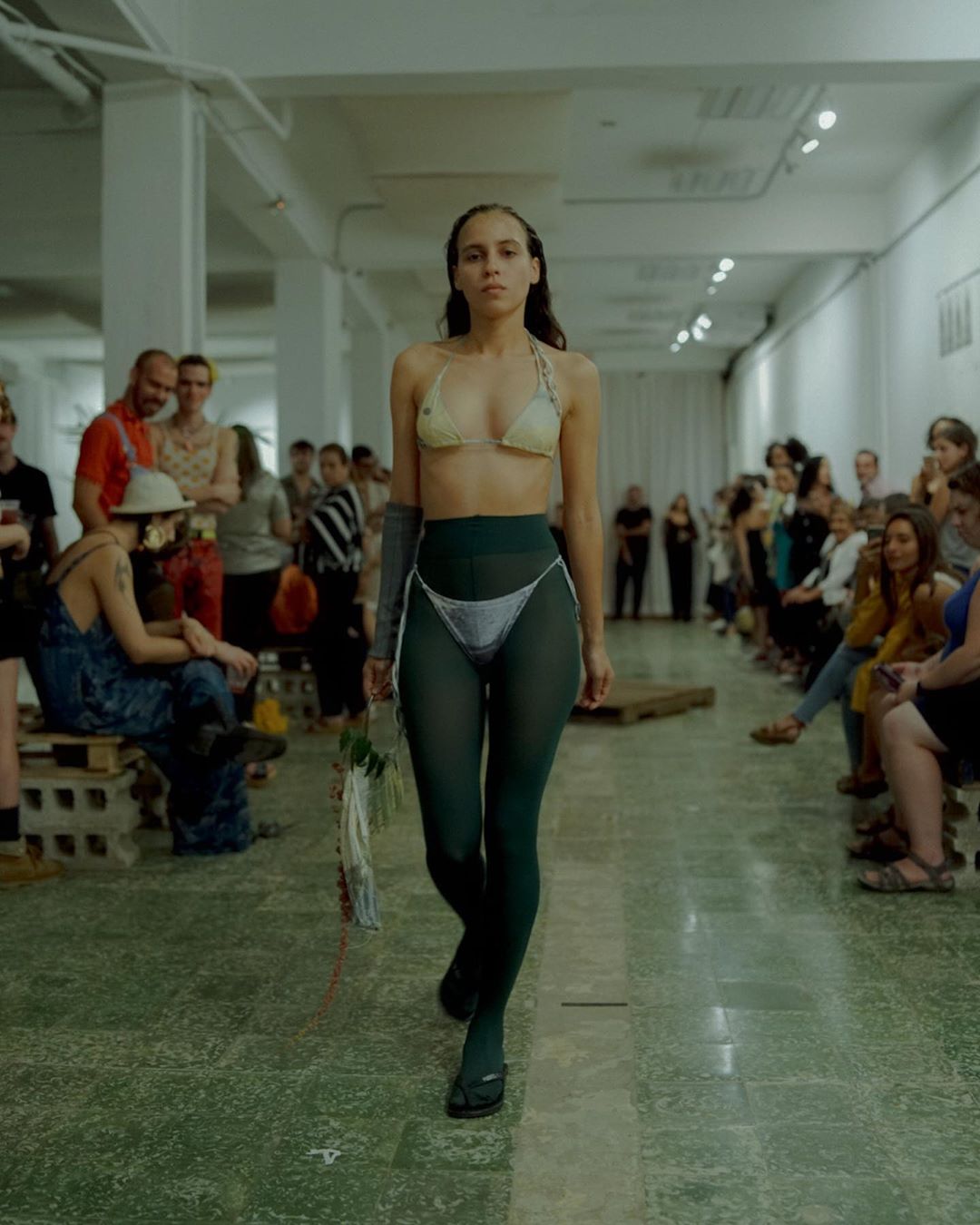 |
Photos courtesy of Krystal Paniagua
When speaking on the limitations of the traditional fashion map, the knitwear designer highlights an interesting and pertinent point. Indeed, , “these main fashion capitals have created such a strong base for fashion that it makes the whole practice easier. Considering that, it’s easier to find materials and tools that facilitate the process of fashion design. Also, these places have entities that support new talent.” Nevertheless, she truly thinks that this tendency leads to a saturation of creativity. As the offers are restricted and the demands still quite important, some designers might lose the essence of their creation at the expense of a more standardised aesthetic that fits the industry’s requirements better. The question of opening fashion geographic borders is going beyond traditional fashion institutions’ will since social media deeply disrupted the order. “Platforms on the Internet have definitely facilitated visibility and connection. There are many designers that are based in places outside of the main fashion capitals and have an outcome of same quality as any designer based in Paris. I don’t think one needs to be in Europe to succeed in fashion” says Krystal. Materials and financial resources are factors that could justify the hegemony of these capitals. However, sometimes, even these elements cannot prevent individuals from doing fashion, even though they are not located in the Western world.
Our next stop is in Ghana. The story of Eyiwaa Agyekumhene, founder of the label Kayadua, truly shows us that being outside the fashion map can actually be an advantage. Indeed, her designs are the reflection of a culture that is not often seen in the West. It is refreshing to see another vision especially when it comes to practices such as weaving. As with Krystal Paniagua, her interest for fashion design came at a very young age. Inspired by her grandparents who raised her after she lost her parents, she says that “they were naturally skilled, they could find their way around doing things without being taught and that really intrigued me.” In order to make fashion her main activity, she did a major in Fibre and Fabrics at the Kwame Nkrumah University of Science and Technology in Accra. “Aside from that in my Senior and Junior High Schools, I always tried to pick something that related to arts or fashion when there was the option in the course I was studying.” Her fashion label Kayadua is aims “to encourage confidence and freedom of expression”. Thanks to her pieces – mainly accessories – she wants to share experiences with her audience. By using hand weaving and stitching techniques, Eyiwaa is promoting savoir-faire from her culture. Investing in Ghanaian traditions allowed her to create beyond the Western norms and concepts of fashion.
Fashion has always been part of the African culture, contrary to popular assumption. “Fashion is in almost everything we do. I don’t think the West influences it. I rather feel our focus is on the west and that’s what needs to change. I just feel we should have an open mind and pay attention to different fashion industries around the world” claims Eyiwaa. Indeed, searching in the history of fashion practices within the entire continent is an enriching experience. Depending on the countries and the communities, a lot of crafts currently employed in the Western world, actually come from Africa. That being said, these past few years, the industry in Ghana is consequently growing. People are coming together in order to work and share. More and more, the need for validation from the establishment is becoming obsolete. “That has been the norm for a very long time but gradually it’s changing. As an African, I can only speak on my experiences here. I’ve really been seeing lots of designers – not just designers alone I will say creatives – who just started on their own here in Africa. They are able to build a sustainable business here without the validation of the West and they have been thriving before the West got to know of them.”
Knowing that this order is evolving, it gives hope for the future of these creatives. Staying on the African continent to build something sustainable and reliable is essential for designers such as Eyiwaa: “I have a vision to build a fashion house that helps to create a strong artisanal team here in Ghana by training and teaching hand skills like weaving, beading and embroidery. I would love to use this to create a platform for providing job here. I think there is nowhere to properly achieve this but be here.” While the Western world is not necessarily ready to go beyond their boarders, the industry is still blossoming in many parts of the world. Fashion labels just like Kayadua will always be relevant to study since her approach allows us to explore another vision of design and creation.
The last stop of this journey is in Sao Paulo with the Brazilian designer Marina Dalgalarrondo – founder of her own label, ÃO. Exploring fabrics, shapes and colours, Marina’s designs are part of a more experimental vision that grasps the obsolescence of borders. Her passion for fashion started at 22 years old when she was studying costume design and visual arts. “I started my journey within the arts, where I was interested in creating an interrelation between clothing and art, researching how clothing could be the artwork and not the consequence of an artistic work. At some point I understood that I would like to go the opposite way, to do fashion with a focus on art. I believe that fashion is one of the most important tools in order to understand our times, as well as art. It can drive us to political, social and aesthetic revolutions.” Aware of the social and cultural role of fashion in the society, Marina is translating the complexity of her own environment through her creations. Sao Paulo is a very complex city, full of paradox and inequalities. “People are coming from all over the country, immigrants of different ethnicities, and the city oscillates between a great ostentation of luxurious architecture and extreme poverty,” says the young designer. Just on her way from home to her studio she is able to observe the beauty of this diversity. The city’s grey buildings and individuals in the public spaces are interacting to offer a narrative about the social dynamic in the city. Her creations are intriguing and aligned with the environment she is evolving in.
Going beyond the usual forms, Marina has a vision that is her very own. “I have always heard that design serves a need and a function. But in my work, this function does not only fill technical requirements. I believe that the function of aesthetics that I have been developing is aimed to challenge, in some way. I choose to distort the traditional silhouette, work with materials that provoke this feeling of strangeness and bring artistic references to the visual identity of ÃO.” By having her small studio in the city, she is able to explore the energy and possibilities of such surroundings. She is determined to stay since Sao Paulo has a crucial place in Brazilian fashion. Nevertheless, it truly needs new talents to draw alternative aesthetics. She has also her “network of friends, artists and collaborators who are part of ÃO as well.” Truly contributing to the speculative future of what Brazilian fashion could be, Marina is choosing to invest in a more local approach that promotes the national workforce. “I believe a lot in the local economy, in small-scale production that prioritises quality and respects collaborators. We should focus on promoting diverse aesthetics. For me everything that goes against this should be rethought.” Additionally, she is working on a made-to-order logic that is avoiding throwing away leftovers in the process.
Questioning the traditional model is actually driving us to understand fully the beauty and importance of cultural heritage when it comes to creation. Indeed, the Brazilian history enables us to be aware of the impact and position of sub-groups in this hierarchal structure. For instance, the condition of Afro-descendant in the continent is truly bound to the history of slavery starting in the 16th century. A deep trauma is part of this heritage. The oppression experienced by Afro-Brazilians is a topic explored by creatives within the local industry. Mindful towards such social issues, Marina explained that there are few black designers who have real space in the Brazilian media. There is an economic, social and structural racism problem that still restricts their possibilities regarding studying, training and entering the job market overall.” Recounting the dark past and current circumstances surrounding racial inequalities, the Afro communities based in Brazil are using their everyday struggles to create. Through her practice, Marina curates visuals and writing archives to incorporate them in her visions as ancestral and anchored customs. “In my work, I bring several references. I have already researched a lot about clothing related to Brazilian religions with African origins – which clearly lead me to complex signs that I must treat with great respect. In our shows, I am seeking to highlight multiple types of beauty – for instance Black, Trans and Plus Size communities. We are also creating content that are involving more Black and Trans creatives.” The designer affirms, “Beauty and strength in Black culture are the main cultural roots of Brazil legacy. It is where our main songs, foods, dances and of course, fashion come from. Therefore it is very important to highlight this culture and its contribution.” Seeing designers such as Marina aiming to correct misrepresentations and misconceptions inherited from the past gives hopeful possibilities for the future of this industry.
Although our journey outside the borders of the traditional fashion map wraps up here, we as participants in the fashion and creative industries should never stop looking outside the subjective lines that delimitate territories. The simple act of creating is visible in many cultures and can take different shapes or forms. It is not about comparing and evaluating according to our cultural set of values – as ethnocentric logic would suggest. It is more about exploring and enriching our vision of fashion. The Western hegemony has led to a one-dimensional discourse that is aimed to valorise its very own system. Questioning and educating ourselves on these topics is essential to make structural changes a tangible reality. If sharing cultural products have to happen, it must highlight the social context from which it emerged. Through the stories of Eyiwaa, Marina and Krystal we can see the importance and influence of heritage that drives unique creativity. Opening up the frontiers seems the least the fashion industry could do – as a field with international impacts. Social media has truly shaken the establishment; nevertheless, transformation also has to be institutional. Creating new structures or improving the existing ones, either way, reforming is vital.
